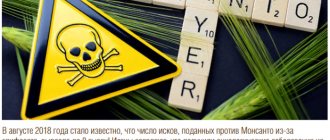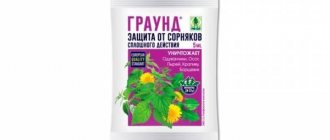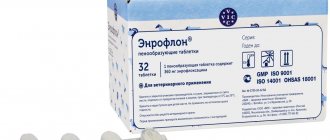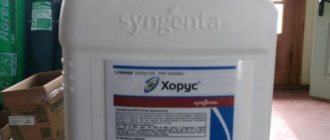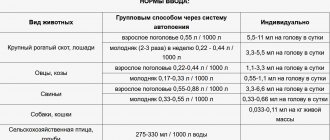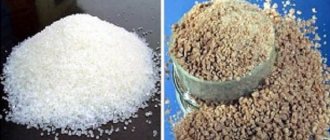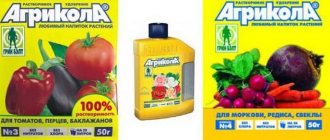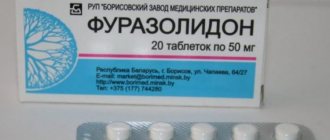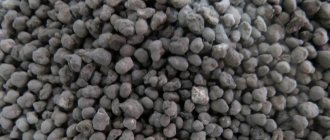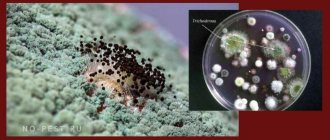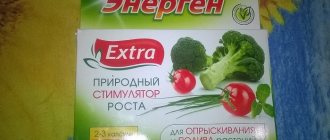Humus is the basis of soil fertility. They say that if there is a lot of it, then the soil is fertile. It is this that colors the soil dark. Humus is the final stage of decomposition of organic matter in the soil, including a complex of complex compounds. Now many gardeners and gardeners use potassium humate to grow and feed vegetables and flowers. Considering it a fertilizer, many are mistaken. Then what is the product used for, what effect does it have on plant growth, how to use it correctly? Read more in the article.
Potassium humate - what is it?
Depending on what is extracted with, that is, what alkali is used, sodium, potassium or ammonium humate is obtained. Potassium humate is considered the best, since excess sodium ions spoils the soil structure. But some plants love sodium ions, for example, onions.
Potassium humate itself is a fine-crystalline black powder. As a rule, this is a product of peat processing. The following forms of humates are distinguished: ballast-free, highly purified, and containing ballast substances.
Types of fertilizer
Potassium humate is one of the universal fertilizers. At the same time, it is effective and economical to use. When compared with other popular organics (manure, humus), in addition to the positive effect on soil and plants, the following points are highlighted:
- environmentally friendly product;
- convenient for storage;
- quickly affects the culture;
- there is no need to wait until ready, as is the case with humus;
- does not have a sharp unpleasant odor.
Before feeding plants, it is worth deciding on the form of fertilizer. But the choice is made by the farmer himself. They take into account the degree of need, timing, how convenient the method of application is, goals, and expected results.
Liquid
Since the substance is obtained from peat, the color is dark brown. This form is the most popular. It is famous for its high efficiency and rapid action on seeds and seedlings. Potassium humate is a concentrated liquid that is diluted in cold water before use.
Bottles containing the substance contain instructions for dilution. Also, this form, unlike others, can be used together or sequentially with nitrogen-containing and organic fertilizers
Powder
It is more characterized by farmers as an immunomodulator. After treatment with dry potassium humate, the plant grows faster and bears fruit.
Positive changes occur in the soil (humus formation, acceleration of microflora restoration). Subject to breeding. The recipe and proportions for preparation are indicated on the packaging of the powder.
Beneficial properties for soil
The use of humic preparations, according to foreign and domestic scientists, is expressed in the following:
- Increases seed germination and germination up to 100%;
- Stimulates root nutrition as a result of building up the root system;
- Helps the plant to absorb those beneficial substances and microelements contained in the soil, converting them into an assimilable form;
- The microbiological structure of the soil improves;
- Humates are responsible for structuring the soil, turning very small soil particles into larger lumps. The soil becomes looser and more moisture-absorbing, and significantly more so;
- Due to the looseness of the soil, the roots absorb more oxygen from the soil;
- Heavy metal salts are bound into compounds that are inaccessible for absorption by plants.
Fertilizer compatibility
At the beginning of the season, the farmer creates his own calendar of treatments and field work with plants. At the same time, treatments with fertilizers, fungicides and other means are taken into account. If you decide to use potassium humate during the growing season, it means:
- Do not treat the soil together with phosphorus-containing preparations or potassium nitrate. The gap between applications can be at least a week.
- Perennial crops are processed several times per season. But annual plants - only before budding.
Release form
- Tablets, 14 g each. For root and foliar feeding, dilute at the rate of 1 tablet per 50 liters of water, for soaking seeds - 1 tablet per 3 liters of water.
- Powder is a more economical preparation. A concentrated solution is made from it. 1 tsp. powder is diluted in 10 liters of hot water, temperature 70-80ºС. The solution must stand for at least 8 hours so that all the granules are well dissolved. Afterwards the solution is drained from the sediment. If this is not done, then granules like potassium permanganate that get on clothes can leave stains. The working solution is prepared at the rate of 0.5 liters of concentrate per 10 liters (bucket) of water.
- The liquid concentrate is used as bark and foliar feeding.
- Paste and gel have a high percentage of penetration and binding.
Mistake #1: We consider humate a natural fertilizer that only brings benefits
Humate and humus, although similar words, have different meanings. Humus is a product of organic decomposition, a natural component of fertile soil. And humates are salts of humic acids. They are obtained chemically by treating peat, coal, humus and other organic matter containing humus with alkali, usually caustic sodium or potassium. But the base is not always natural; sometimes humic substances are obtained entirely from chemical reagents, without using natural humus.
Video: how you can deprive yourself of a harvest using humates
Instructions for use
Before use, when diluting a ready-made or powdered concentrate, make sure that the working solution is the color of walnut wood (like the surface of a wooden work table). If you make the concentration stronger, there is a risk of burning the plants. A lower concentration will not give the expected effect. But in any case, it is better to make a solution of lower concentration so as not to harm the plant.
Root feeding of vegetables
Tomatoes, eggplants, potatoes, cucumbers in a greenhouse and open ground are watered at the root with a working solution (0.1-0.5 liters per bucket of water). 1-2 liters are used for each plant. Feeding is carried out 3-4 times per season every 2 weeks.
Foliar feeding
Treatment of greenhouse plantings is carried out by spraying the leaves. Dilute 150-200 ml of concentrate in a bucket of water. Consumption – 10-20 liters per 100 sq. m. Treatment is carried out 2 months from the beginning of the growing season in order to nourish the root system in order to continue fruiting. Before processing, it is necessary to remove fruit-bearing shoots from cucumbers. This reduces the load on the root system.
Pre-sowing seed treatment
Vegetable seeds, onions, garlic are soaked in a 0.01% warm solution of potassium or sodium humate for a day (1 g per 100 ml of water).
Flower crops in open ground
80-120 g of powder are diluted in a bucket of water. After complete dissolution, water the flowers at the rate of 3-4 liters per 1 square meter. m. Feeding is carried out every 2-3 weeks.
Houseplants
To prepare the solution, 10 g of powder is diluted in 1 liter of water, watered once every 2 weeks in the summer, and once a month in the winter. Make sure that the powder or granules are completely dissolved.
Fruit trees
To improve the soil around old trees, make a ditch at a distance of 1-1.5 m from the trunk, about the depth of a spade bayonet, and pour in a solution of humate prepared from concentrate (0.5-1 liter per bucket of water). Or pour powder and then seal the groove.
Strawberry
Before transplanting strawberries, the prepared rosettes are soaked in the working solution for several hours. In this case, the strawberry roots should be completely immersed in the solution.
The most effective humic fertilizers
Each type has different characteristics and beneficial properties.
Potassium humate liquid peat
This product is dark in color. It is based on peat. An effective and sought-after growth stimulant. To obtain a positive result, you must adhere to the dosage prescribed in the instructions. The liquid type of agricultural product helps to cope with diseases, stimulates growth, and increases productivity. Compatible with organic and nitrogen mineral fertilizers.
Potassium humate peat powder
Strengthens the plant's immunity, accelerates the growth and ripening of fruits and vegetables. It is not recommended to exceed the dosage indicated on the package, as this may cause the crops to wither. It has a positive effect on the development of roots, microflora in the soil, and increases productivity. A kilogram of the product is compared with a ton of humus in terms of beneficial properties and effects on plants.
The drug "Reichard"
A balanced mixture that improves soil fertility. The composition includes only environmentally friendly and safe components. Suitable for open and closed ground, indoor plants, fruit and berry crops, vegetables. It is used when processing seed material, as well as during the entire growing season. Stimulates growth, protects against diseases and pests, improves the quality and quantity of the harvest.
Fertilizer mixture "Prompter"
A unique product, as it includes a balanced formula of organic compounds and minerals. Accelerates seed germination, helps resist diseases and pests. Improves soil composition.
Can be used 2 times a month from early spring to autumn. The solution must be prepared immediately before use (it is not advisable to dilute it several days in advance: the composition will lose its beneficial properties). It is not recommended to store it ready-made.
Soil improvement
To increase the nutritional properties of the soil and detoxify after using pesticides, humates can be added in powder form under digging. Depending on the condition of the soil, fertilizing is done 2-3 times. It is enough to add 100 g of powder per hundred square meters of land. It is allowed to water the beds with a working solution in the open ground and in the greenhouse. This can be done in the summer, when vegetables bear fruit and flowers bloom, and also in the fall, after harvesting.
You can add humate as an additive to organic fertilizers, such as manure, compost, humus (10 g per 10 kg of organic matter).
Vegetables and humus supplements
With constant use of a personal plot, the soil is depleted. Additional use of organic matter is required, for example, manure or humus, but it is much more cost-effective to use concentrated humic fertilizers.
They are also made from organic matter, but are much cheaper and more cost-effective. If it takes time for organic components to rot, then potassium humate for feeding cucumbers acts immediately after application to the soil.
When using potassium humate for any vegetables, rapid development of seedlings and accelerated appearance of flower stalks and ovaries are observed. The climatic conditions of the region have little effect on losses during fruit filling.
Various natural mixtures of humic additives are suitable for all types of soil: sandstones become more viscous, and clay allows air and moisture to pass through better. We can say that this is a universal preparation for all garden plants.
For acidic soils, “Prompter” is suitable, the pH of which is 10. This neutralizes the acid. If the soil has not been looked after for a long time and only mineral additives have been used, then it is recommended to use humates - sodium, ammonium, potassium - in the first year to restore fertility. Next year the harvest will be much higher.
For neutral and slightly acidic soils, it is necessary to use a neutral humic fertilizer, the pH of which is 7 - 7.5, so as not to alkalize the soil, otherwise the absorption of phosphorus will be impaired.
Some nuances
Let's look at some nuances using the example of Lignohumate and Normat L. Do not forget that adding a substance does not eliminate the need to use mineral fertilizers. But you can reduce their dosage. The dosage is very small. For example, to process a hectare of vegetable crops, only about 1 liter of Lignohumate or Normat L concentrate diluted in water is required. The concentration of the working solution is usually taken in the range of 0.01...0.05%. For example, to obtain a 0.02% solution per liter of liquid 20% concentrate, you need to take 1000 liters of water! Lignohumate should be mixed with other liquid preparations already diluted, since concentrates may react if there is a large difference between Ph levels (read about this here). By the way, for this reason, using such a 20% liquid concentrate in the country is difficult. Therefore, drugs are produced with lower concentrations and in smaller containers. Humic substances are used not only separately, but also as part of universal fertilizers; this is a good option for flower growers and gardeners, but not for farmers. By the way, about versatility: many articles advise treating indoor flowers with a “prompter” (potassium humate Prompter). But in order to evaluate the effectiveness of fertilizing and decide whether to trust this organic fertilizer, you need to know the composition and production technology. Unfortunately, the manufacturer is very vague about the composition, and we couldn’t find any information about the production technology at all. We hope that now you will not have problems with instructions and yield.
How did people learn about the benefits of humates?
People began using potassium and sodium humates as fertilizers back in the days of Ancient Egypt. True, the land was most often fertilized without their direct participation. The Nile River overflowed its banks and overflowed for many kilometers. When the water receded, the peasants discovered a dense black layer of substance on their arable plots, which they could not name. Time after time, the Nile came and flooded the land, and then people began to pay attention to the fact that the harvest became more abundant after the river overflowed its banks. Then the peasants themselves began to bring humate to their plots and fertilize the land with it.
And at the end of the 19th century, scientists, through their scientific works, confirmed the usefulness of using humates as fertilizers. It turned out that they can not only accelerate the growth of plants, make them more resistant to weather conditions, but also prevent heavy metals and radionuclides from being absorbed into the roots and remove the consequences of treating plants with pesticides from the fruits.
And only after scientific recognition, potassium humates began to gain wide popularity among gardeners and farmers. Now potassium humate is known to every person who has their own plot and grows various vegetable and berry crops on it. Humate is sold in any agricultural store and costs very little money.
